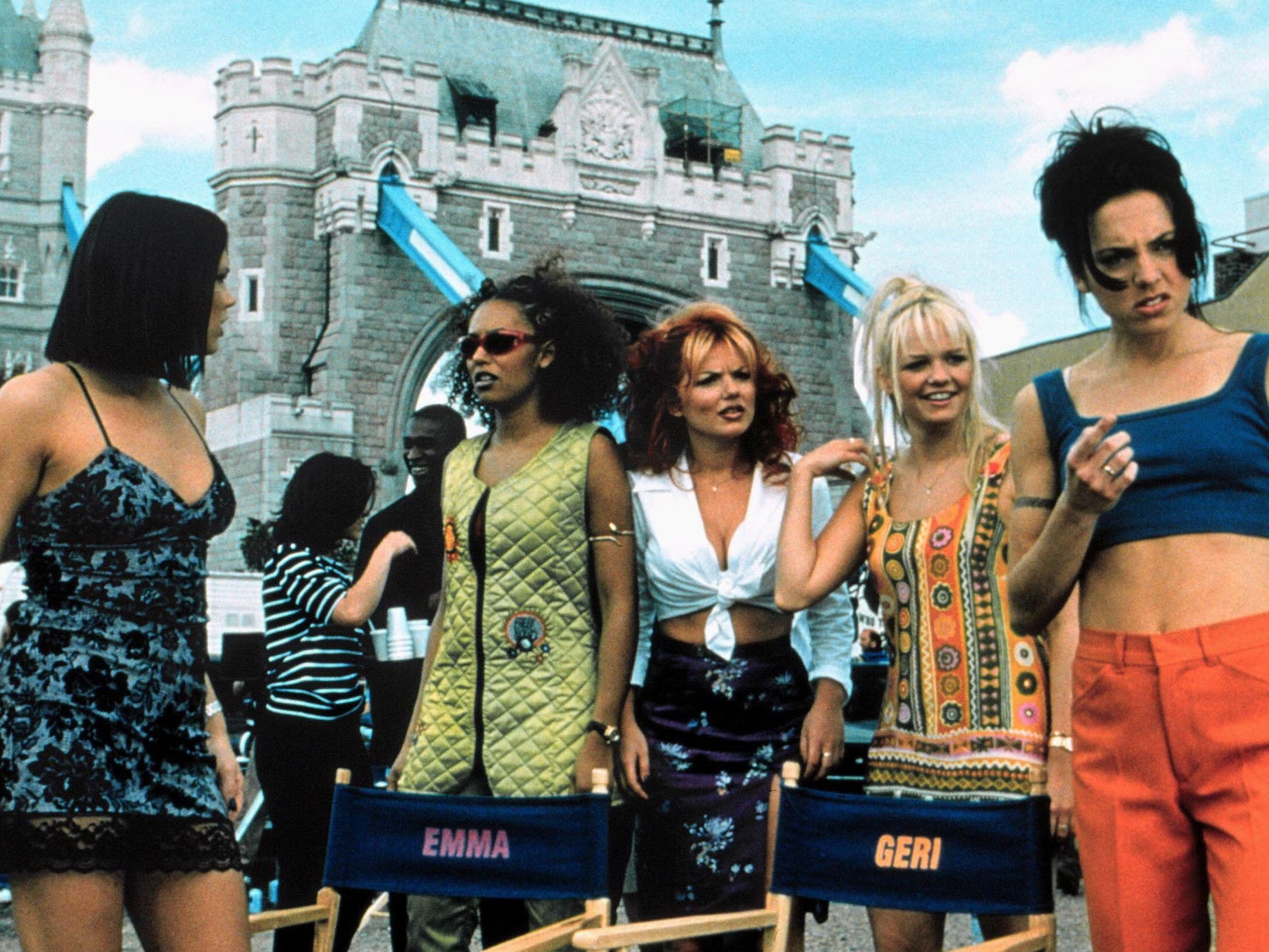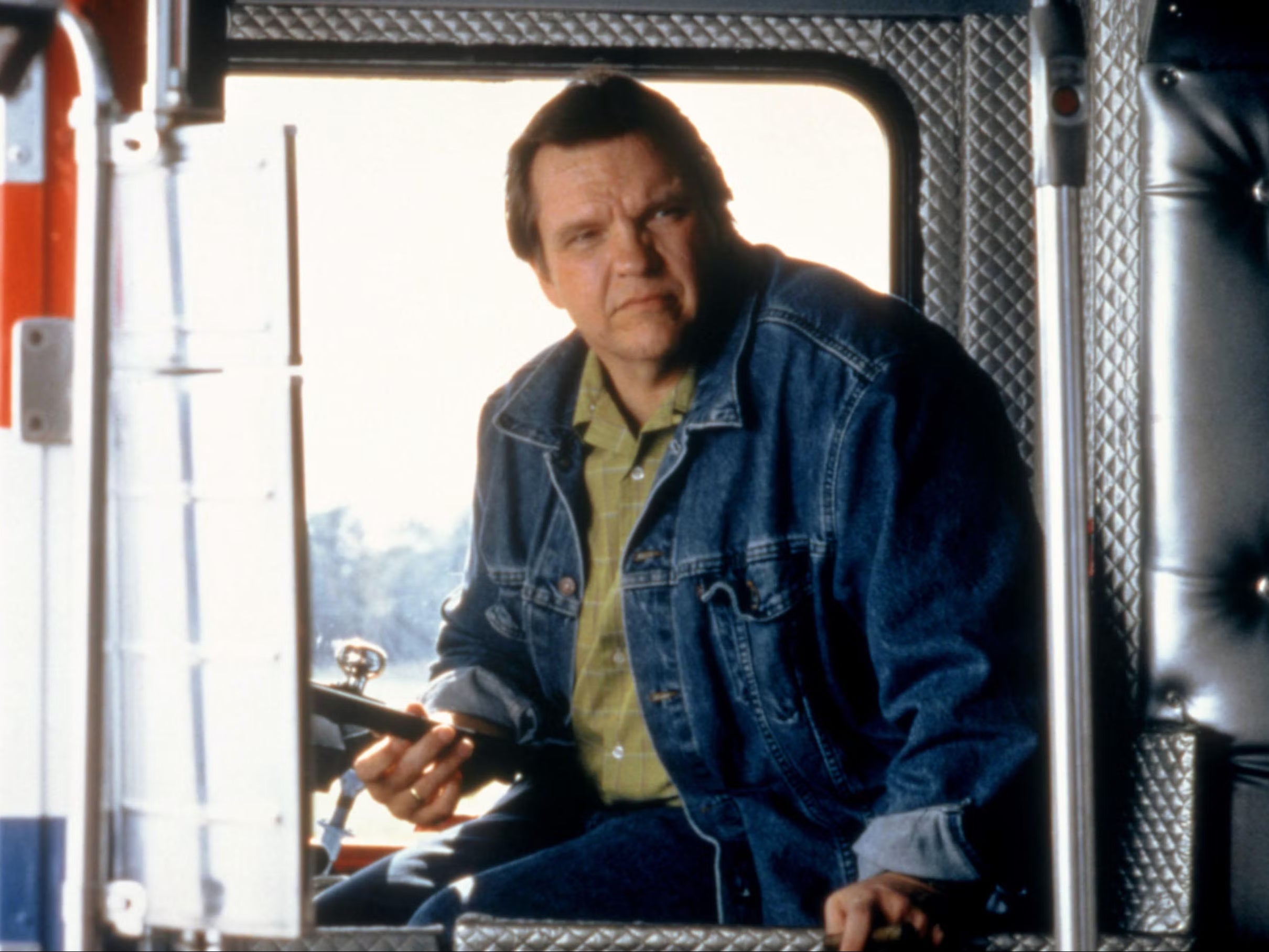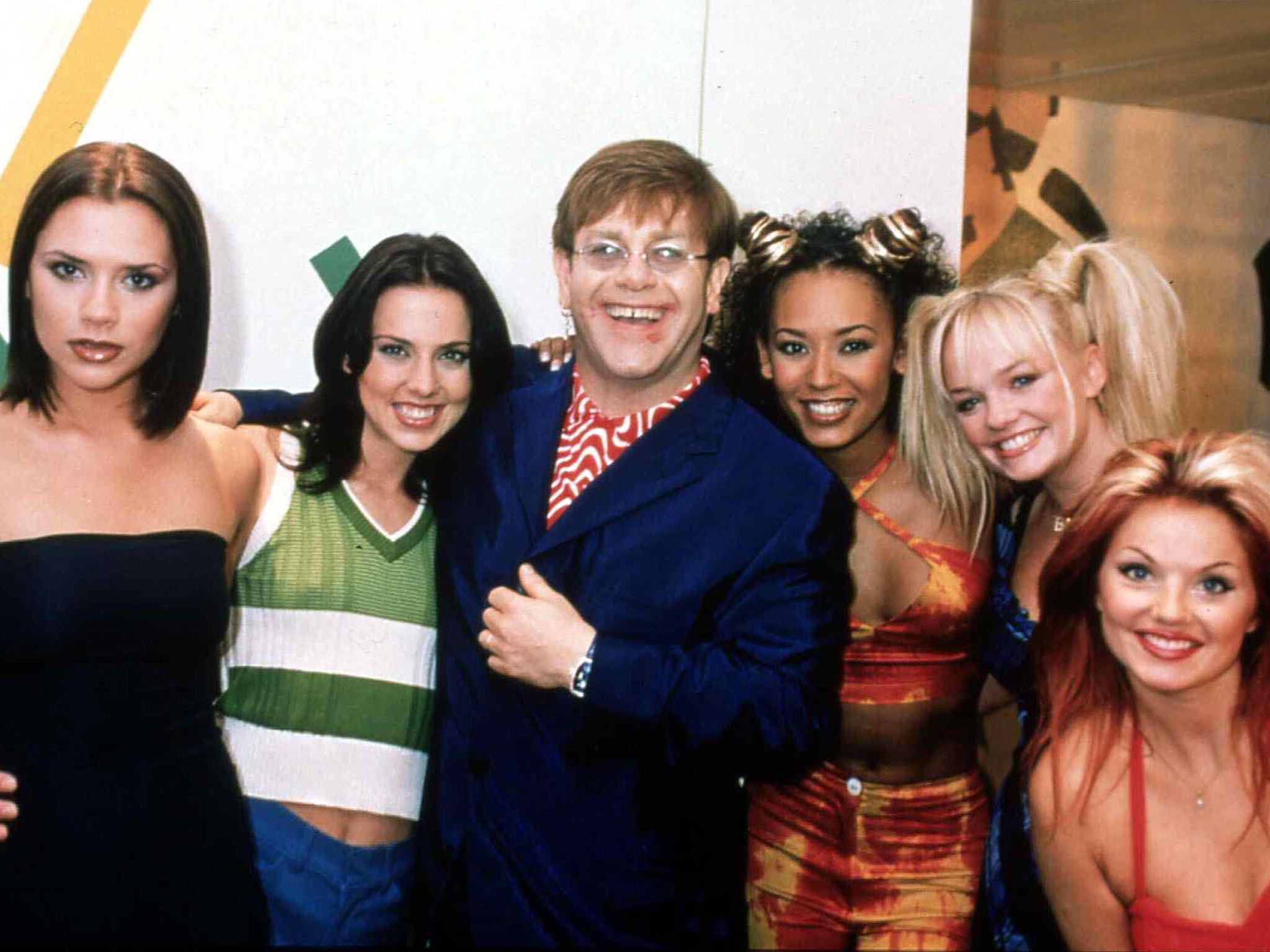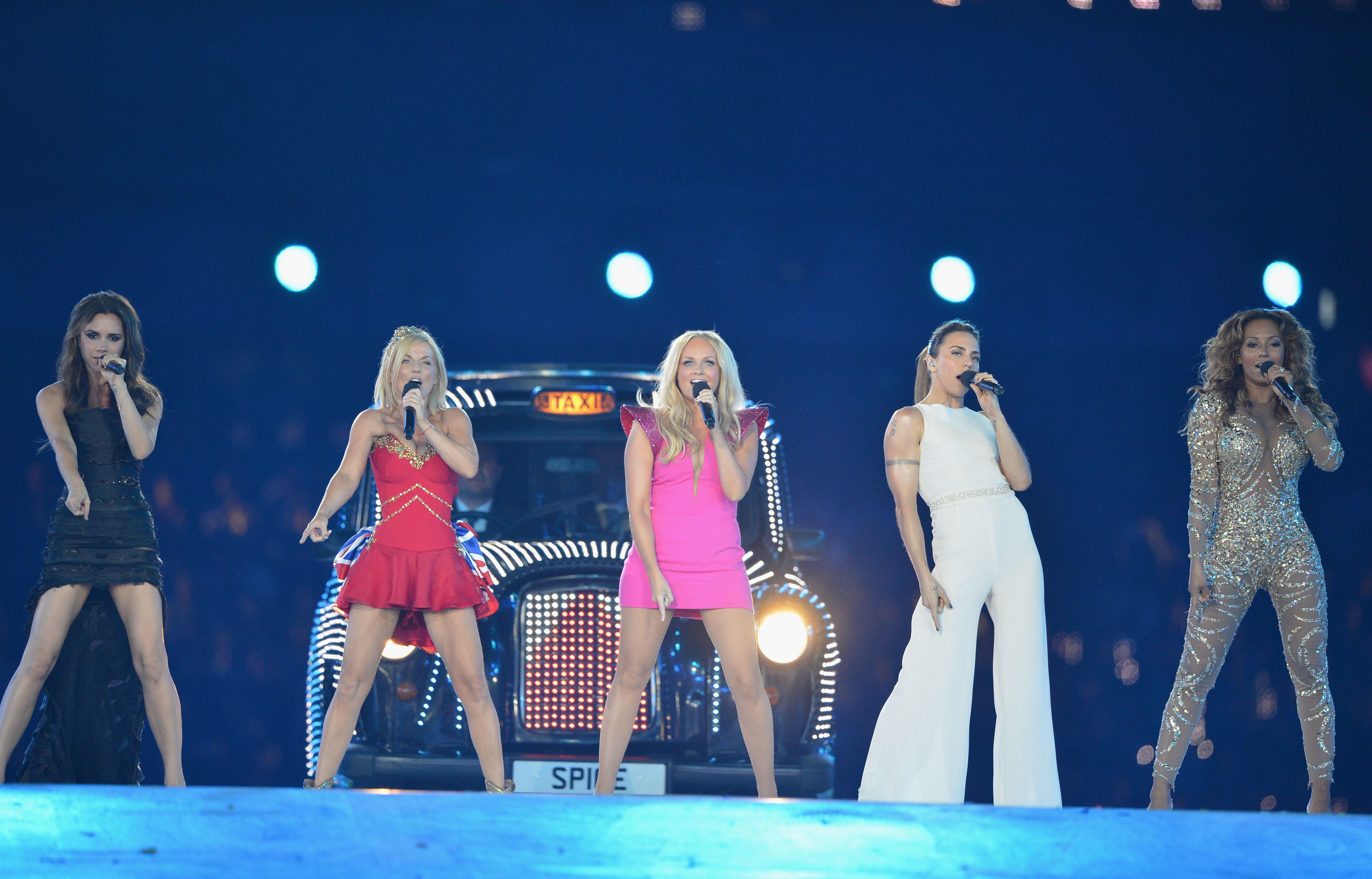‘We ran out of parts for people’: How Spice World became the ‘must be in’ movie of the Nineties
Mark Beaumont finds out why a homage to Beatles films made at the height of the Spice Girls’ fame got panned by critics only to become a cult classic

Your support helps us to tell the story
From reproductive rights to climate change to Big Tech, The Independent is on the ground when the story is developing. Whether it's investigating the financials of Elon Musk's pro-Trump PAC or producing our latest documentary, 'The A Word', which shines a light on the American women fighting for reproductive rights, we know how important it is to parse out the facts from the messaging.
At such a critical moment in US history, we need reporters on the ground. Your donation allows us to keep sending journalists to speak to both sides of the story.
The Independent is trusted by Americans across the entire political spectrum. And unlike many other quality news outlets, we choose not to lock Americans out of our reporting and analysis with paywalls. We believe quality journalism should be available to everyone, paid for by those who can afford it.
Your support makes all the difference.As the yacht drew into Port de Cannes and the camera shutters went into overdrive, it seemed from a distance that five disparate versions of Audrey Hepburn were making the grandest of entrances. Sporting the sunglasses and headscarves of 1950s starlets – variously paired with leopard-print chiffon, rainbow crop-tops and sports-branded underwear – this was a ragtag bunch of ingenues. There was an elegant one, a redheaded one, a childlike one, one who looked a bit angry about something, and one seemingly fresh from a set of mixed doubles.
Waving to the hordes of screaming fans on the docks, the Spice Girls swept ashore at the 1997 Cannes Film Festival ready to strut, pose, backflip and karate-kick their way right through the silver screen. A global phenomenon, they had arrived at the celebrated movie conference to promote their debut cinematic endeavour, Spice World: The Movie, released 25 years ago this week, and even somewhere as star-studded as Cannes had rarely seen such scenes of frenzied fandemonium.
“The Cannes Film Festival is quite an earnest place, and it brought this burst of colour into a black-and-white world,” says Barnaby Thompson, Spice World’s co-producer. “We put them on the roof of the Hotel Martinez and there’s 10,000 people outside. I don’t know what Beatlemania was like, but there was a real sense of excitement about everything.”
The buzz around the band – who’d had four UK No 1 hits in the previous 12 months and hit the US top spot with “Wannabe” during filming – would make the movie a $100m (£83m) success on the back of a $5m (£4.13m) budget, not bad for a largely plot-free hodgepodge of celebrity cameos, surrealist dream sequences, Tardis tour-buses, movie pastiches, Girl Power wisecracking, and close encounters with horny aliens, which was panned by critics at the time.
Over the intervening quarter-century, however, its stature has grown to that of credible cult classic: an end-of-innocence snapshot of an unrepeatable moment in both British cinema and pop music, when pop stars could still be a little magical and unreal, and their movies pure primary-coloured lark.
Much of the retrospective appeal of Spice World is a result of the unashamed debt it owes to classic Ealing comedy and the cinematic oeuvre of The Beatles. “A Hard Day’s Night was always one of my favourite films,” says Thompson. “And so the idea of doing A Hard Day’s Night with a female group was very appealing.”
In fact, Spice World was more of a catch-all homage to all of The Beatles’ films. Its scenes of Spicemania were pulled straight from the Hard Day’s Night playbook, but the girls’ tour bus – a union-flag-festooned double-decker from the outside; inside, the size of a small house, with individual quarters for each Spice that allowed Victoria Adams a full mirrored wardrobe and Emma Bunton a swing and a slide – was a flagrant nod to the Fabs’ communal house with four front doors in Help!.
Likewise the comic-book character work, including Richard E Grant’s role as the Spice Girls’ manager, clad in the bright-coloured suits of a mid-ranking Batman villain, and Richard O’Brien as a creepy paparazzo climbing out from under beds and inside toilets to try to snap the girls.
The more bizarre sequences, meanwhile, could have fallen straight out of the drug-drenched script of Magical Mystery Tour. Take Michael Barrymore’s turn as an unintelligible drill-sergeant-cum-choreographer called Mr Step, a flash-forward of the girls as middle-aged mums, or the iconic scene in which aliens descend to meet the band then try to feel up Mel B.

Watch Apple TV+ free for 7 days
New subscribers only. £8.99/mo. after free trial. Plan auto-renews until cancelled

Watch Apple TV+ free for 7 days
New subscribers only. £8.99/mo. after free trial. Plan auto-renews until cancelled
It all worked, Thompson believes, because of the postmodern “movie within a movie” framework of the film – “There’s basically a producer and a writer pitching the movie to the Richard E Grant character as it’s unfolding” – a premise that allowed Spice World to shoot off at self-parodic tangents without becoming too much of a mess. “We wanted to do a film that was very much in the spirit of the girls, and they didn’t take themselves seriously,” Thompson says. “There’s the Roger Moore character, who is very much a satirical take on [then-manager] Simon Fuller, so everyone was happy to make fun of themselves.”
“The Beatles did the whole thing about being pursued by the reporters, and it was very much a caper,” says the film’s co-writer Kim Fuller, brother of Simon and at one time a regular contributor to TV comedy shows such as Alas Smith and Jones, Spitting Image and The Tracey Ullman Show. “But Spinal Tap was partly what I was thinking of – it was an ironic send-up.”
That Spice World became such a madcap blitz of a movie was largely down to Disney’s addiction to schmaltz. The Spice Girls had been eyeing up the big screen ever since they took control of their own “manufactured” band after having been put together by audition in 1994. “When we got together ... one of the first things we said was ‘It’d be really great if we could do a movie,’” Emma Bunton said in 1997. “We said to ourselves, ‘We’re not just a band, we want to try everything.’” “We always wanted to go out and conquer the world,” added Melanie Chisholm. “We’re just pushing it to the boundaries and seeing how far we can go.”
As their star ascended with “Wannabe” in 1996, Simon Fuller touted them around Hollywood studios and sold an option on a Spice Girls film to Disney. “I read it and it was very much in the Disney mould,” says Kim, who was denied the chance to contribute to Disney’s script. “It shows their family relationships, one’s from a single parent... it was very much a progressive Disney story, and they all come together and they all overcome their issues and become a famous band.”
The Spice Girls rejected the proposal. “Although the perception was that they were brought together and manufactured, they were actually very much in control of what they would and wouldn’t do,” says Kim. “So turning Disney down was fine.” Instead, once Disney’s option had expired in November 1996, Fuller was granted free rein to work on a script, spending time with this “force of nature” of a band to get “an angle on their characters and lives, where they’d come from, and what their attitudes were”.
The writing process was a back-and-forth collaboration. “We got the idea of ‘Let’s send up a week in their lives,’” Kim says, “and I would go to them and say, ‘What do you feel about this?’, because I wasn’t necessarily sure that they would happily show themselves up in this slightly mad, over-exaggerated way. They would come back with ‘How about if we do this in that scene?’, so it worked in that way, more like a dialogue backwards and forwards... I remember saying ‘I want to do something where someone falls in the river’ because it’d be funny if they’re doing a stunt on a boat. And Geri said, ‘Victoria should do that.’ The whole concept was there in front of me, the celebration of female friendship – it was them; they did that – and I put it into a structure and made it daft and funny.”

Thompson, who had previously worked on Wayne’s World and Coneheads with Saturday Night Live creator Lorne Michaels, stresses the simplicity of the film as being key to its success. “The simple idea that they’ve got this concert to do at the end of the week. They’ve got the press after them. And that’s kind of the plot. That very much came from the purity of A Hard Day’s Night. Nothing happens in A Hard Day’s Night. Ringo gets sulky, goes off for a wander. It was about creating a vehicle for the girls’ personalities, their outlook on the world.”
By January 1997, the script was semi-complete and the Spice World ball was rolling. Impressive names began to leap aboard the union jack bus, with the girls themselves doing their fair share of casting. “Geri and Emma said, ‘You are going to be in this film, aren’t you?’” Grant recalled at the time. “I was flattered they even knew of my existence.”
Barry Humphries took the role of media-chief villain Kevin McMaxford, Jason Flemyng his newsroom sidekick, and O’Brien his sinister agent stalking the girls. “It does represent that we have been hounded since day one by the press,” Halliwell said in 1997. “They’re everywhere,” Chisholm added. “You wonder when you go to bed at night if there’ll be one hiding under your bed.”
Roger Moore signed on as the band’s record-label chief, Elvis Costello as a barman, and Meat Loaf as the girls’ bus driver when the original choice, Frank Bruno, stormed off set because the band wouldn’t sign autographs for a young family member. “I found out what his biggest hit was, ‘I’d Do Anything for Love (But I Won’t Do That)’, so we’ve got to put that in somehow,” Kim says. The thing Meat wouldn’t do for the Spice Girls, in one of the movie’s most memorable lines, was unblocking the bus toilets. “I said, ‘Do you mind saying that?’ And he said, ‘No, I’ll say whatever you want.’”

“At a certain point we could ring up anyone,” says Thompson. “Bob Hoskins is in it, and Bob Hoskins had not worked his whole career so that he could get to be in a telephone box with the Spice Girls. But he was clearly told by the young and, I suspect, female members of his family that it was not an opportunity that he could turn down.” There were only a few high-profile near misses. “Joan Collins was up for it, and by the time she said she’d do it, it was too late,” says Fuller, while Thompson believes they almost bagged Tony Blair. “There was a scene that we had at the beginning of the film which was outside No 10,” he grins. “There were lots of chats with Downing Street, but it didn’t come through in the end.”
Competition for roles was fierce. Alan Cumming, who played a documentary director following the girls throughout the movie, admitted: “I bludgeoned my way into this. It is like my dream come true to work on this film.” Naoko Mori, who had played Saffy’s friend Sarah in Absolutely Fabulous, provided the emotional heart of Spice World as the girls’ pregnant friend Nicola, left behind amid the maelstrom of pop stardom. She was told that virtually every female actor in their twenties had gone up for her part. “Bob Spiers, the director, said they had people fainting meeting the girls,” she laughs. “I didn’t faint, so that was probably a tick.”
If you wanted to be the Spice Girls’ co-star you had to get with their friends, so Mori was adopted into the girl gang from day one. “Instantly they were so friendly,” she laughs. “They would all talk at once, which is so cute. Geri was straight in: ‘What’s your name, we love you, have you got a boyfriend?’” Victoria even asked Mori to talk to her boyfriend David, a fan of Mori’s work, on the phone. Having flown in from Japan to audition knowing little about the band beyond their music, it was three days before Mori realised she’d had a chinwag with Golden Balls himself.
Such was the clamour for screen time that, according to Fuller, “We ran out of parts for people,” and he began writing in cameo scenes as the filming progressed. Backstage corridor encounters with Elton John, Jools Holland as the gig’s musical director, fantasy scenes featuring Stephen Fry as a judge and Hugh Laurie as Hercule Poirot. Bob Geldof and Jennifer Saunders were among the famous faces to be spotted in a party scene, and a four-minute cameo from Gary Glitter was removed pre-release after he was arrested for possessing images of child sexual abuse.

Jonathan Ross recalled the celebrity mentality around Spice World in 1997. He described how, reading a newspaper article listing the many famous names appearing in the film, he had scoffed: “‘Who are these fools that are taking part in this movie? There’s no way I’d do it...” He continued: “Secretly, inside, I was weeping. Then that morning I bumped into the director, who said ‘Would you like to be in the film?’ I said ‘Bob, I’d love to!’”
Comedy Store Players founder and Whose Line Is it Anyway? regular Neil Mullarkey had a similarly last-minute casting experience. “[Co-writer Jamie Curtis] rang me on the Sunday night,” he remembers. “He said, ‘Have you got a suit? Can you be in Chiswick tomorrow morning?’ ‘Yeah, OK.’ That was the casting couch.”
If the plot was designed as a movie within a movie, the shoot itself added another layer of meta. While producers were filling London streets and the Albert Hall with screaming extras to recreate the mania around the band, beyond the barriers the chaos was happening for real. Legions of fans would besiege studios and locations. “It was a bit daft,” says Fuller. “Instead of using extras we could have just filmed the real crowd half the time.” During a location shoot at a stately home near a farm, paparazzi even disguised themselves as a pantomime cow to try to get shots of the girls on set.
“The security was crazy,” says Mori. “Everywhere we went there was just a sea of fans and paparazzi. If we were moving from one place to the other, we would literally be putting blankets over our head and there’d be tarpaulins so people couldn’t peek in.”
Paparazzi even disguised themselves as a pantomime cow to try to get shots of the girls on set
In the eye of what Halliwell called “one massive tornado”, the Spice Girls themselves were surprisingly unflappable. “Everything’s quite normal to us, it’s just everybody on the outside’s going a bit ‘Waaah!’,” Chisholm said on set. Despite early starts and constant wrangling over lines, the band revelled in scenes where they were transformed into superheroes or dressed as each other for a day, and gave largely merit-worthy performances on camera. Thompson found them to be the very antithesis of pop divas.
“They all shared a trailer, and for the first time I think they all got separate cars,” he says. “I think they were a bit lost, they didn’t know quite what to do.” “We were all sharing the green room,” adds Mori, “so there wasn’t that sort of hierarchy thing of ‘You have to go into that tiny room over there because the girls are here’.”
Such was their work ethic that, between takes, the band would conduct promo interviews, perform for international TV shows, greet competition winners, or sequester themselves in the on-hand studio truck to record the accompanying, 14-million-selling Spiceworld album, sometimes delivering tracks for use in the film with hours to spare.
“We made it very much on the run,” says Thompson. “We were writing the script whilst we were shooting it. They were recording the songs whilst we were shooting. Some of the songs, like ‘Spice Up Your Life’ – literally, we were played that the day before. We could have got very uptight about the fact that we’ve got 5,000 people in the Albert Hall and we don’t have a song yet, but there was a level of trust that they would deliver. It made it a very exciting film to make... we were just reacting to things that were happening. It was very liberating.”
The thrown-together attitude pokes through at times. Witness the circle of stage lighting covered in smoke machines that was called in at the last minute because no one had been asked to build a spaceship for the alien arrival scene. Or the miniature cardboard model of Tower Bridge created for the climactic moment when Victoria jumps the speeding tour-bus over the Thames to get to the show in time.
But Spice World’s fantastical, knockabout feel is part of the charm of the finished film, and key to its subsequent cult status. As the New Labour dream turned sour, 9/11 darkened the dawn of the 21st century, and the drive towards social media “relatability” stripped pop stars of their mystique, with the vibe becoming more confessional than celebratory, this piece of Nineties cash-in fluff began to make the Cool Britannia era look like a golden age, its colour and carefree humour recalling the equally corny documents of Sixties British psychedelia.

“It’s difficult to imagine that the late Nineties was an innocent time, but it was a period of enormous hope and positivity,” says Thompson. “We’d had all the Thatcher years, and it was felt that there was a positive government – a lot of things that we don’t have right now. The country felt very together, people felt very proud to be British or English. We had that great 1996 Euros. It was an amazing time. And I think that gave a kind of positivity, which the girls epitomised. We set out to capture that moment. If an alien was to land 50 years from now and say ‘What was 1996 or ’97 like?’, that’s what we’d show them.”
Fuller is proud of Spice World’s “innocent spirit”, and that it purposefully avoided any “dodgy” innuendo or casual misogyny that might have undermined its “girl power” ethos. He points out that it passed the Bechdel test with flying colours, and bottled the lightning of a phenomenon that was swiftly sparking out. By the time of the film’s release – just one year on from the deal being struck – the band had fired Simon Fuller as manager. Within six months, Halliwell would depart, setting in motion the band’s collapse 18 months and one final album (2000’s ironically titled Forever) later. The unified girl gang of Spice World was, almost immediately, a thing of the past, caught in celluloid aspic.
By capturing that fleeting moment, the film has become a gleaming relic of the brief peak period of mid-Nineties poptimism, alongside Blur vs Oasis and Pulp at Glastonbury. And for the generation of pop fans who had their life spiced up by it, it represents the essence of pre-millennial youth, the sheer, exuberant zig-a-zig-ah-ness of the Nineties teenage experience. “I can’t tell you how many people I meet now, who are in their thirties and forties, for whom it was a massive film in terms of their life,” Thompson smiles. “Adele was a huge Spice Girls fan. I think that for a lot of young girls in particular, they’d just never seen anything like that.”



Join our commenting forum
Join thought-provoking conversations, follow other Independent readers and see their replies
Comments